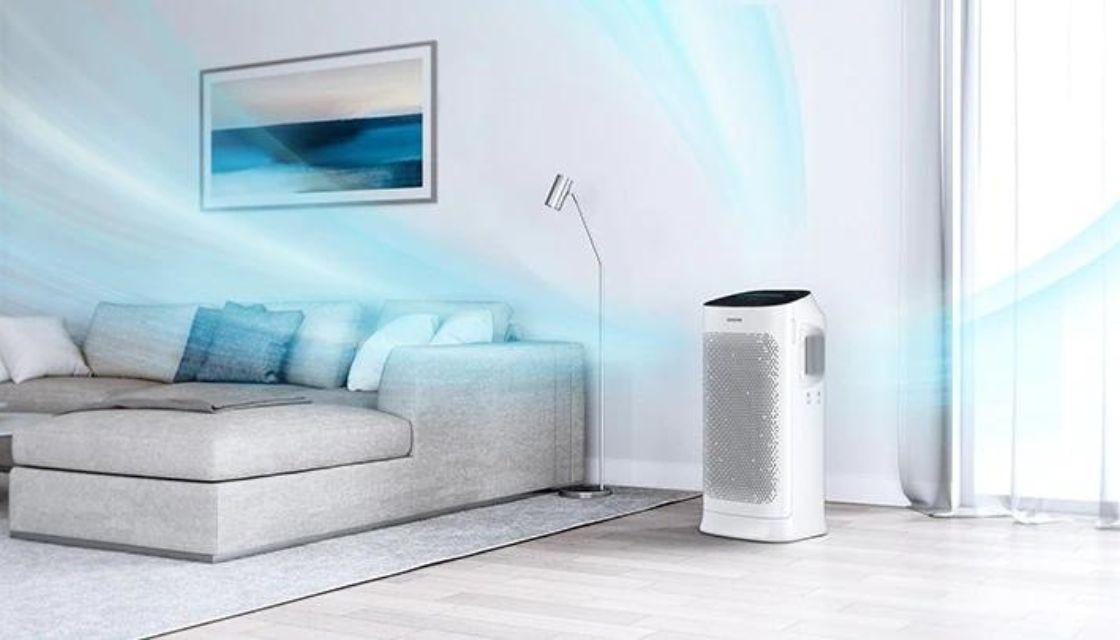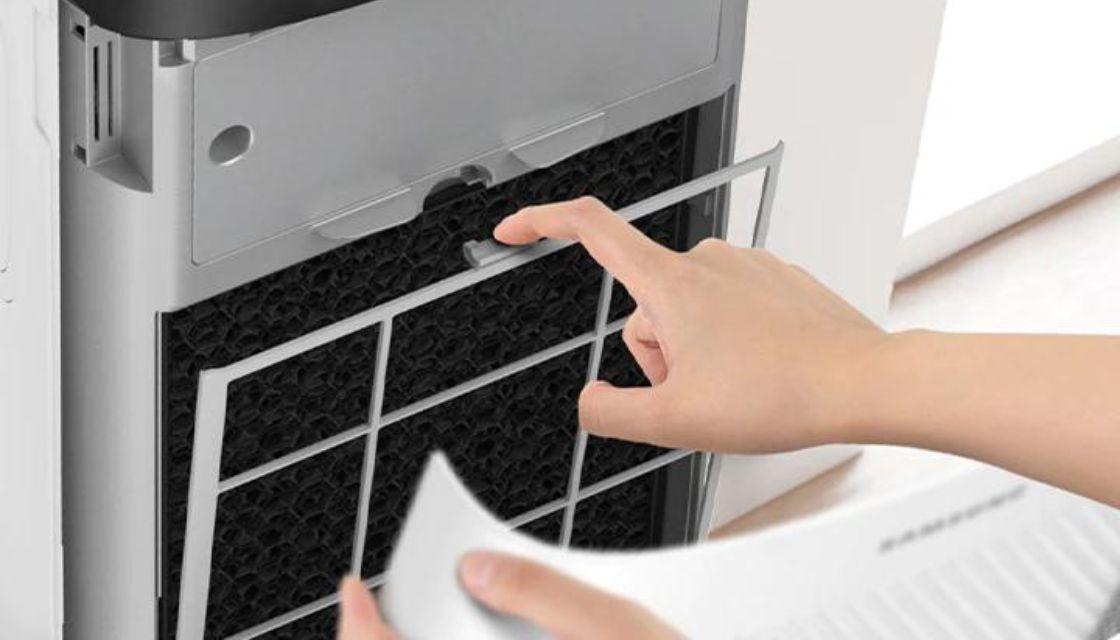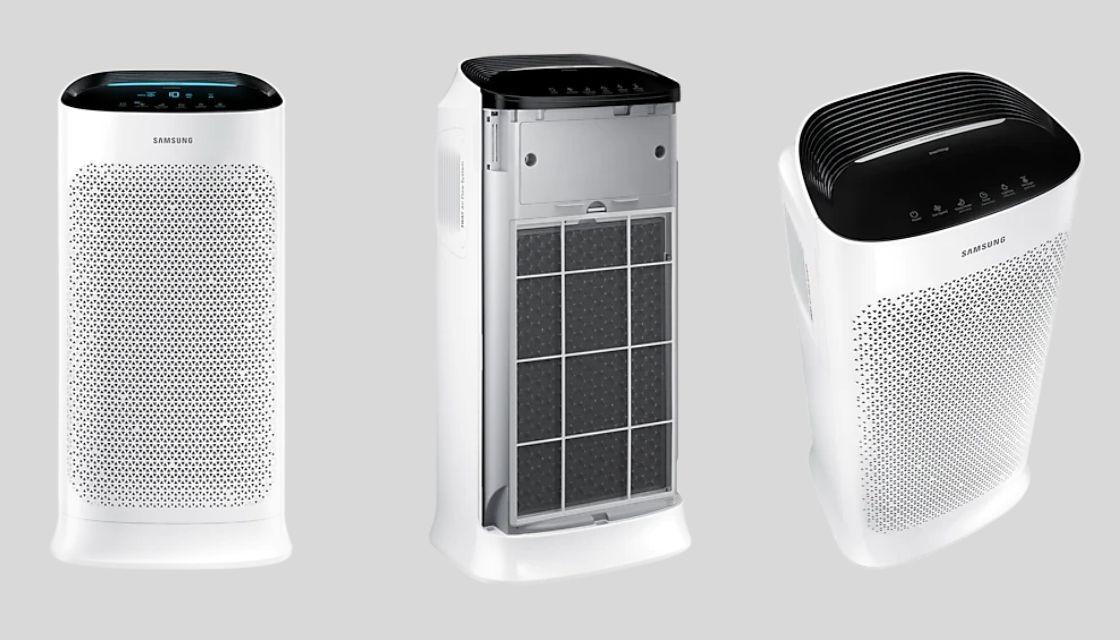
If there's one thing I now no longer take for granted, it's clean, fresh air and a well-ventilated space. Imperative for preventing the spread of seasonal nasties, good ventilation can also curb the transmission of potentially deadly diseases - like the novel coronavirus that, you know, essentially shut down the entire world for two years.
The pandemic has forced society to rethink how it operates in a day-to-day capacity; from hand sanitiser becoming a handbag staple to refusing to use the Eftpos PIN pad and the fear of sharing an elevator, COVID-19 has given way to a heightened awareness around the importance of clean hands, clean surfaces and clean air. With the team of five million tasked with protecting vulnerable family, friends, whānau and the wider community, many of us adopted new habits and abided by stringent restrictions to do our bit to help stop the spread of the virus.
But with the pandemic now finally in our rearview mirror, many have continued to keep up their new practices or household rules - like cleaning shared spaces and surfaces - to make life a little bit less gross for everyone.
With arguably more people than ever now realising the importance of clean air and a well-ventilated space, air purifiers have been having a bit of a moment in the world of household appliances. In an independent study, researchers at Melbourne's Deacon University found the heating or ventilation systems in the majority of homes, offices and classrooms are not effective at removing nasty aerosols harbouring COVID-19, especially when compared to air purifiers.
So wait, what is an air purifier and what does it do?
In a nutshell, an air purifier is essentially an air cleaner; a device which removes contaminants from the air to improve the room's indoor air quality. The devices are commonly marketed as being beneficial to asthmatics and those who suffer with allergies to dust mites or seasonal pollen, and can also be useful for reducing the impacts of second-hand tobacco smoke.
When I was asked if I wanted to review a Samsung air purifier, I was more than happy to take on the task. In a world recovering from the rampant spread of a deadly virus, I thought now was the perfect time to put an air purifier to the test and see what the hype is about. Plus, Samsung's air purifiers have been independently verified by Deacon University as the most effective out of 23 competitor devices, which is pretty impressive.
I used the Samsung Air Purifier AX5000 for a few weeks, and these are my thoughts.

For starters
Before we get into the nitty gritty, let's set the scene. Myself and my two flatmates live in a small, one-storey bungalow with one bathroom, two bedrooms and a large, open-plan living room that flows into the kitchen. There are several large windows and the house itself is well-placed to catch the sunlight, meaning they're typically open during the day as at least one of us is often working from home. We have no pets and while two of us are coeliacs, we thankfully don't suffer from hay fever or dust mite allergies; however, the third is asthmatic.
The house is also equipped with a very effective Daikin air conditioning and heating system that keeps it at our desired temperature and removes some humidity from the air during the warmer months.
Unlike many homes in Aotearoa, we're also fortunate that our house is dry, well-insulated and not prone to mould, dampness or mildew, meaning that when it comes to air quality, our humble abode is doing alright as it is.
Why is this important? Well, an air purifier in our home isn't going to yield as many benefits as it would in, say, a classroom, open-plan office or poorly ventilated house. Not to say they're obsolete in well-ventilated and dry homes, but considering their cost, they would perhaps be put to better use in other households or spaces where they could really make a difference.
Having said that, with our habit of avoiding additional housework wherever possible (like honestly, who has the time to wipe the baseboards?) and me being a walking, talking contaminant wafting hairspray and fake tan fumes throughout the house, I assumed there would still be a fair amount of impurities and dust in the air. But according to Samsung, we were pretty much given an A+ for air quality.
The good
As a 25-year-old woman with limited common-sense and a questionable attention span, when I was presented with the big box emblazoned with intimidating imagery of the large white, vented contraption, I braced myself for a profanity-laden, blood pressure-raising task ahead.
Home alone with no one to assist, I was prepared for an excruciating hour of erecting various panels and figuring out discombobulating buttons; yet to my surprise, the purifier pretty much came out of the box rearing and ready to go, with the exception of removing the protective packaging from the internal filter.
With the filter's plastic sleeve removed and the panels back in place (with maybe a "f**k" thrown in after attempting to refit the panel upside-down for five minutes), the purifier was plugged in, switched on and whirring away.
First up, the unit features an easy-to-understand display that allows you to adjust the fan speed, enable or disable its Wi-Fi connectivity and check when the filter needs replacing, among other functions. It also features an air quality indicator and a gas pollution indicator, which allows you to see if your home is an airy-fairy oasis - or dusty and crusty - at a single glance. The air quality is displayed in pleasantly dimmed colour lighting, reflecting the air's particulate matter - PM10, PM2.5, PM1.0 or gas pollution level - whichever is the worst.

Whenever I had the AX5000 in operation, the intuitive interface showed the current air quality via colour - reflecting the PM10/PM2.5/PM1.0/gas pollution - and the concentration level indicators. Each time I checked, the purifier was lit up with blue, which indicates good air quality and a low level of pollutants. The PM10 level was also good (30 and below), with the gas pollution level at one - the best out of four.

As for the features, the filtration system is particularly clever and works in three very smart stages. Firstly, the washable pre-filter captures pollen and pet dander and secondly, the deodorisation filter effectively controls household odours and eliminates harmful gases. This is great because it means I can burn food in the kitchen but any lingering smells of singed grilled cheese can be quickly assuaged.

Finally, the high-performance HEPA filtration - with an ultra-fine dust-collecting filter - removes fine particles in the air such as bacteria, very fine dust and particulate matter, and cigarette smoke particles. The advanced HEPA filters claim to achieve 99.97 percent particle removal at 0.3 microns, which guarantees pretty much any nasties in the air are being filtered out, and with 3-Way Airflow, the unit was powerful enough to purify our medium-to-large living space. It also came equipped with concealed wheels, which allows you to move the purifier from room to room with ease.
Then, there's the app. Samsung's SmartThings App allows the purifier to be easily controlled from your phone or tablet (as part of up to 250 devices at once!). Once connected, the master user has access to a real-time dashboard, which includes the state of each device, the current air conditions, and the ability to create schedules en masse. You can monitor and control the air quality in your home from anywhere; with a touch or simple voice command, you can turn the AX5000 on or off, and control other functions.

It's also worth noting here that Samsung air purifiers have gained accreditation with Sensitive Choice New Zealand, an initiative led by the National Asthma Council to help people identify products and services that are catered towards those with asthma and allergies. With an asthmatic in our household, it's reassuring to know our air is typically clean and therefore not harmful, which could be a major selling point for other households with severe asthma sufferers.
The bad
From an aesthetic point of view, I wouldn't go as far to describe the AX5000 as an absolute eyesore, but it didn't exactly fit in cohesively with our muted, minimalist, grey-and-neutral colour scheme. Sure, it's white with black accents and features pleasant lighting if desired, but it's also large, cumbersome and sticks out like a bit of a sore thumb in an otherwise streamlined space.
Samsung has been favouring more contemporary and sleek designs as of late, with new appliances such as the Bespoke Jet Elite Extra Stick Vacuum featuring a stylish exterior that fits seamlessly into a modern home; the air purifier by contrast is a little bulky and unbecoming. This is made particularly evident when compared to the likes of Dyson's offerings; for example, the Dyson Purifier Hot+Cool Formaldehyde is a nifty contraption that also looks the business with its eye-catching, futuristic design (that's also available in gold, how good!)

The other con? The price. The Samsung Air Purifier AX5000 (AX60T5080) is available from Samsung and major retailers for RRP$649 - not cheap. However, this is a sizable model, and was situated in our larger, open-plan living space. There are a range of different sizes available, with mid-range and smaller purifiers designed to be used in spaces up to 60m3 - ideal for classrooms or smaller communal areas or homes. These also come with a less hefty price tag.
Additionally, you should expect to replace your filter every six to 12 months, provided your air purifier isn't on 24/7. For families on a tight budget, that's an additional $129 every six months at most - or an extra $258 annually.

The verdict
Am I saying air purifiers are obsolete in an insulated, well-ventilated home where its residents are not plagued by respiratory problems? No, but with many families and whānau feeling the financial pinch amid the cost of living crisis, perhaps your hard-earned coin could be better spent elsewhere if air quality isn't such a concern in your abode.
If you and your family or flatmates are fortunate enough to live in a well-ventilated, warm and dry home, perhaps an air purifier would just be another appliance to add to the never-ending slew of tech that wouldn't be worth the investment when it comes to cost-per-use.
In my opinion, an air purifier would be put to better use in homes where its residents suffer with asthma, hay fever or allergies to pet dander or dust mites - or who suffer from other respiratory conditions. By capturing airborne particles, harmful gases and bacteria, a good purifier like the AX5000 can help alleviate allergy symptoms and reduce irritation to the eyes, nose and throat.

The AX5000 may also be better-suited to homes that are often filled with contaminants or prone to odours - for example, if you have an at-home hair salon or are frequently cooking with funky ingredients. Of course, homes inhabited by smokers - particularly those who live with children or other non-smokers who are at risk of second-hand smoke - should consider an air purifier for the sake of their loved ones.
As the purifier can inhibit the spread of captured bacteria, this unit could also be a good bet for those with perennially sick children who are constantly coming home with colds, sniffles and snotty noses. Those who live in poorly ventilated and damp homes - factors that can drastically impact air quality - are also, of course, a target demographic for air purifier manufacturers, as well as people living in homes plagued by pollen, high levels of dust, or animal dander and odours.
Let's face it, there are cheaper options available on the market - whether the cost of the Samsung brand name and the extra bells and whistles are worth the cost, that's for you to decide.
Newshub was supplied with a Samsung Air Purifier AX5000 for this review.



